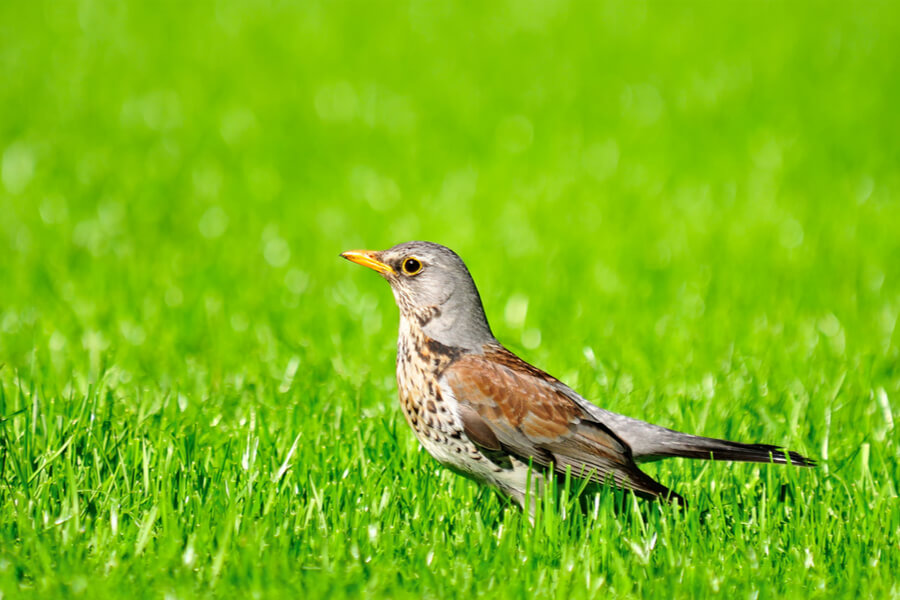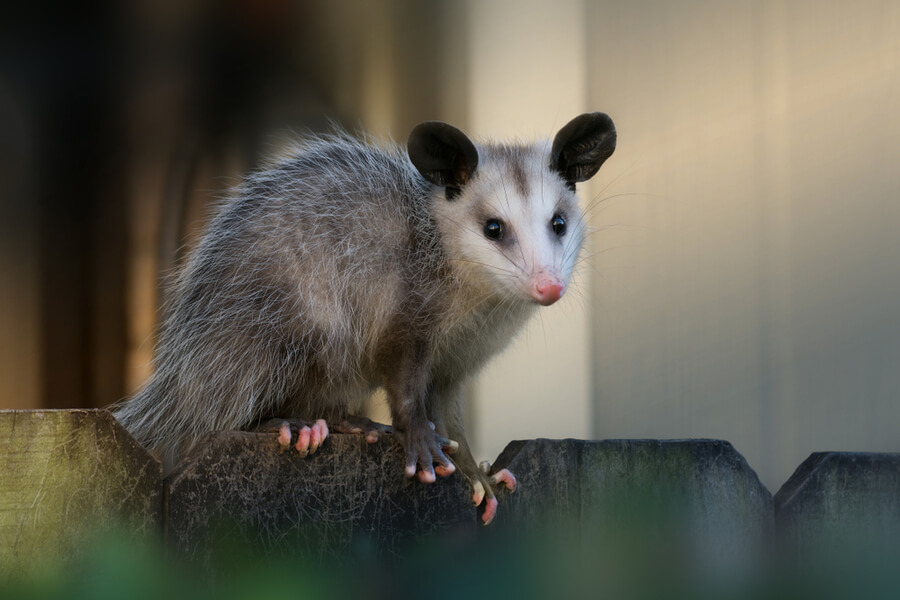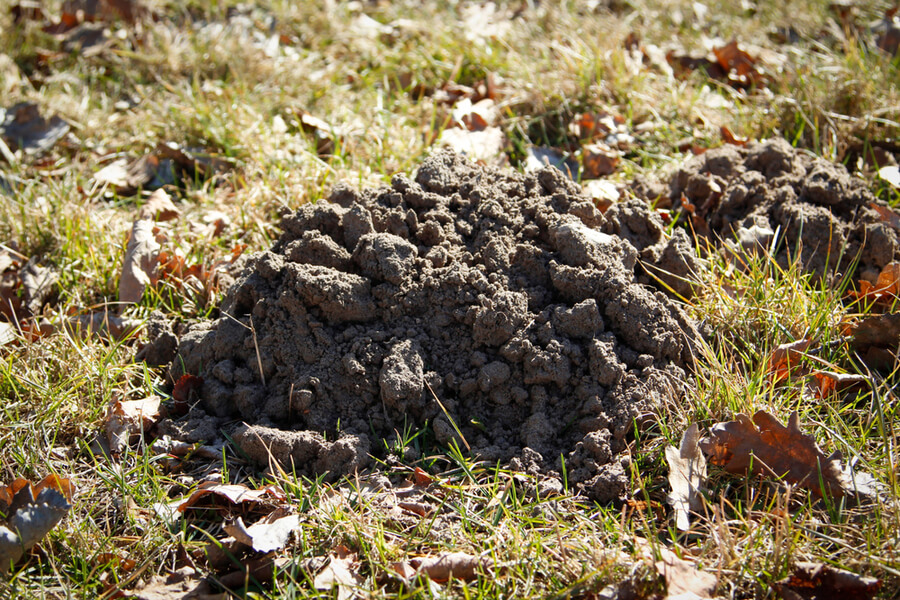Mourning dove
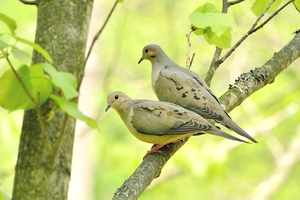 Mourning doves are one of the most abundant and widespread species of birds in the US. They prefer open fields but occupy a wide variety of habitats, and they frequent backyard bird feeders. Mourning doves are small birds (around 9-13 inches long and 3-6 pounds) with plump bodies and small heads. The dove’s long, pointed tail is unique to North American varieties.
Mourning doves are fond of perching on rooftops, tree branches, telephone wires, or high fences. The name “mourning dove” comes from the bird’s distinctive mournful call. Mourning doves come a variety of colors, to match the variety of their open environments. Most commonly, they’ll be gray, light brown, or tan. They have black spots on their twigs and white tips on their tail feathers.
Mourning doves are one of the most abundant and widespread species of birds in the US. They prefer open fields but occupy a wide variety of habitats, and they frequent backyard bird feeders. Mourning doves are small birds (around 9-13 inches long and 3-6 pounds) with plump bodies and small heads. The dove’s long, pointed tail is unique to North American varieties.
Mourning doves are fond of perching on rooftops, tree branches, telephone wires, or high fences. The name “mourning dove” comes from the bird’s distinctive mournful call. Mourning doves come a variety of colors, to match the variety of their open environments. Most commonly, they’ll be gray, light brown, or tan. They have black spots on their twigs and white tips on their tail feathers.
Downy woodpecker
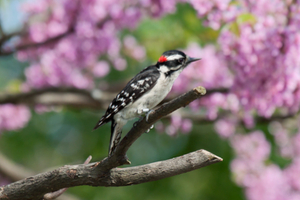 If you hear a woodpecker somewhere nearby, it’s probably the downy woodpecker. The downy woodpecker is the most common woodpecker in Ohio, but it lives all over the rest of the Midwest, too. Downy woodpeckers are very small (only 14-17 centimeters long and usually less than a pound!) and quick. When they fly, they appear to bob up and down and can descend very quickly.
Downy woodpeckers are attracted to older deciduous trees, especially when they can also access natural cover near those trees. They may also peck away at damaged wooden siding on your home or shed. Obviously, the easiest way to tell if there’s a downy woodpecker nearby is to hear their telltale pecking. They also have a high-pitched, staccato call.
If you hear a woodpecker somewhere nearby, it’s probably the downy woodpecker. The downy woodpecker is the most common woodpecker in Ohio, but it lives all over the rest of the Midwest, too. Downy woodpeckers are very small (only 14-17 centimeters long and usually less than a pound!) and quick. When they fly, they appear to bob up and down and can descend very quickly.
Downy woodpeckers are attracted to older deciduous trees, especially when they can also access natural cover near those trees. They may also peck away at damaged wooden siding on your home or shed. Obviously, the easiest way to tell if there’s a downy woodpecker nearby is to hear their telltale pecking. They also have a high-pitched, staccato call.
Eastern phoebe
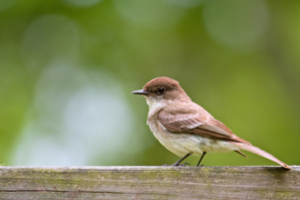 Eastern phoebes are a particularly common bird because they like to build their nests in human structures. They’re commonly found under bridges, on the ledges, and even in window sills, chimneys, or vents. The Eastern phoebe is a very small (14-17 centimeter), plump bird with a large head and a short neck. It has a very short, thin bill that it uses to catch insects.
Eastern phoebes perch on low tree branches, shrubs, and fences. They hunt insects very actively in a small radius around their perches. While perched, you might see the Eastern phoebe wagging its tail feathers rapidly. Eastern phoebes are brown or brown-gray, with white or light gray bellies. Their head feathers tend to be darker than the rest of their bodies.
Eastern phoebes are a particularly common bird because they like to build their nests in human structures. They’re commonly found under bridges, on the ledges, and even in window sills, chimneys, or vents. The Eastern phoebe is a very small (14-17 centimeter), plump bird with a large head and a short neck. It has a very short, thin bill that it uses to catch insects.
Eastern phoebes perch on low tree branches, shrubs, and fences. They hunt insects very actively in a small radius around their perches. While perched, you might see the Eastern phoebe wagging its tail feathers rapidly. Eastern phoebes are brown or brown-gray, with white or light gray bellies. Their head feathers tend to be darker than the rest of their bodies.
Barn swallow
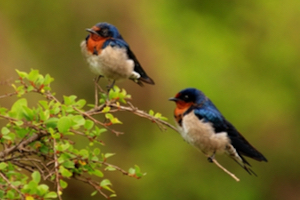 Like the Eastern phoebe, barn swallows love to live around all human structures, not just barns. Barn swallows might nest on support beams, overhangs, roof gutters, vent systems, or other high, sturdy structures. Barn swallows are only around 15-19 centimeters long, but have a large wingspan relative to their bodies. This wingspan helps make them very agile and quick fliers.
Barn swallows are usually pretty easy to identify. They have prominent, dark blue back feathers and striking bright orange or white breasts. Their tail ends in a wide fork. Finally, barn swallows have a rapid twittering call, and they tend to sing quite frequently. Barn swallows are particularly common in rural parts of the Midwest, but you might find them all over.
Like the Eastern phoebe, barn swallows love to live around all human structures, not just barns. Barn swallows might nest on support beams, overhangs, roof gutters, vent systems, or other high, sturdy structures. Barn swallows are only around 15-19 centimeters long, but have a large wingspan relative to their bodies. This wingspan helps make them very agile and quick fliers.
Barn swallows are usually pretty easy to identify. They have prominent, dark blue back feathers and striking bright orange or white breasts. Their tail ends in a wide fork. Finally, barn swallows have a rapid twittering call, and they tend to sing quite frequently. Barn swallows are particularly common in rural parts of the Midwest, but you might find them all over.
American robin
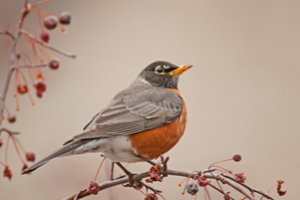 The American robin’s song is one of the quintessential sounds of spring. Famous generalist birds, robins live all over the US. They might nest on houses, in trees, or on just about any supportive structure. They’re especially fond of berry bushes, bird feeders, or lawns where they can hunt worms. Robins are 20-28 centimeters long, weigh around 3 pounds, and have 30-40 centimeter wing spans.
Everyone knows what robins look like! Their most distinctive feature is their red or bright orange crest, which is very prominent and easy to see. The rest of a robin’s body is dark gray or brown. They’re fairly plump birds with long tails and long legs. Robins are migratory birds, but many spend all year in the Midwest.
The American robin’s song is one of the quintessential sounds of spring. Famous generalist birds, robins live all over the US. They might nest on houses, in trees, or on just about any supportive structure. They’re especially fond of berry bushes, bird feeders, or lawns where they can hunt worms. Robins are 20-28 centimeters long, weigh around 3 pounds, and have 30-40 centimeter wing spans.
Everyone knows what robins look like! Their most distinctive feature is their red or bright orange crest, which is very prominent and easy to see. The rest of a robin’s body is dark gray or brown. They’re fairly plump birds with long tails and long legs. Robins are migratory birds, but many spend all year in the Midwest.
Chipping sparrow
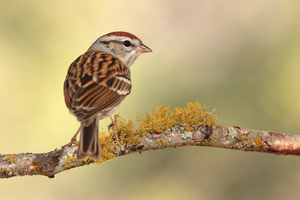 The chipping sparrow is perfectly suited for neighborhood life. The birds feed on fallen seeds primarily, and hop around on the ground to find their food. When they’re not foraging, they perch in covered areas like bushes, shrubs, or evergreen trees. You may often see them perched together in small (and talkative!) groups. The little sparrows are only around 12-15 centimeters long, and usually only weigh around half a pound.
Chipping sparrows are often considered quite handsome birds. Their most prominent features are their pale gray crest and the burnt orange “cap” on top of their heads. They also have pale orange or brown wing feathers with multilayered black and white tipping. Adults also have a black line marking running along their face past their eyes.
The return of the birds is one of the best parts of spring. Unless they’re making pests of themselves. Unfortunately, birds that nest too close to your home can cause all kinds of problems.
Don’t let a couple pest birds ruin your spring. Give Varment Guard a call anytime and we’ll take care of your problem quickly and effectively. Take care of the pest birds so you can get back to enjoying your spring. After the winter we’ve had, you’ve earned it!
The chipping sparrow is perfectly suited for neighborhood life. The birds feed on fallen seeds primarily, and hop around on the ground to find their food. When they’re not foraging, they perch in covered areas like bushes, shrubs, or evergreen trees. You may often see them perched together in small (and talkative!) groups. The little sparrows are only around 12-15 centimeters long, and usually only weigh around half a pound.
Chipping sparrows are often considered quite handsome birds. Their most prominent features are their pale gray crest and the burnt orange “cap” on top of their heads. They also have pale orange or brown wing feathers with multilayered black and white tipping. Adults also have a black line marking running along their face past their eyes.
The return of the birds is one of the best parts of spring. Unless they’re making pests of themselves. Unfortunately, birds that nest too close to your home can cause all kinds of problems.
Don’t let a couple pest birds ruin your spring. Give Varment Guard a call anytime and we’ll take care of your problem quickly and effectively. Take care of the pest birds so you can get back to enjoying your spring. After the winter we’ve had, you’ve earned it!

